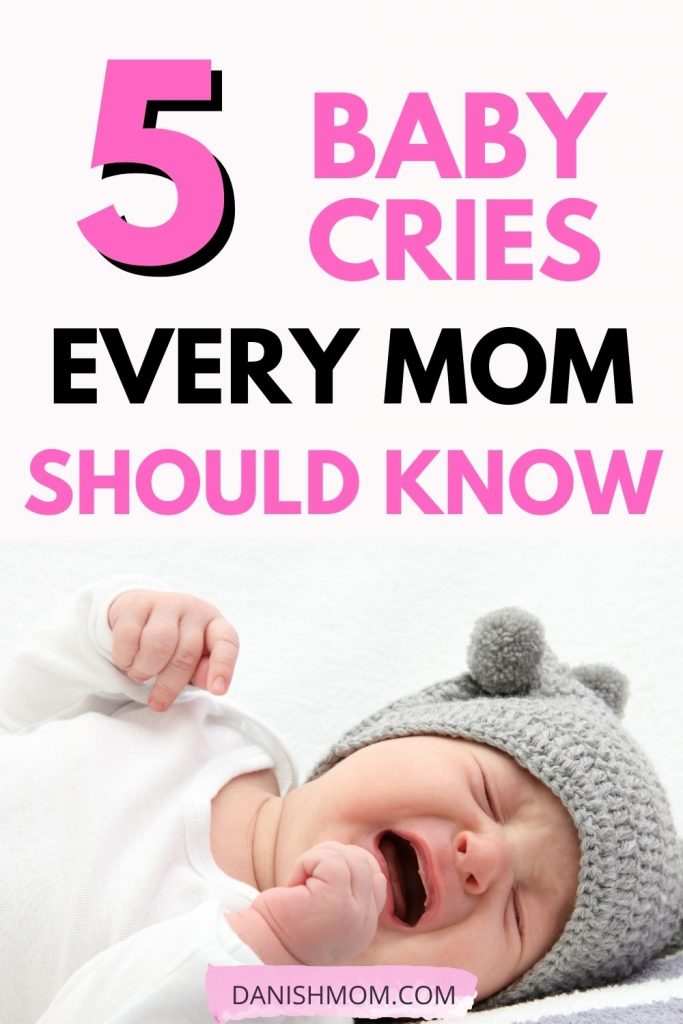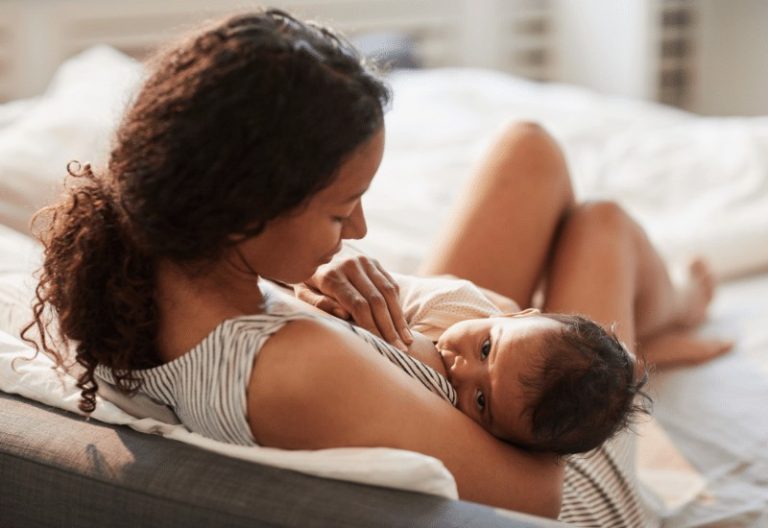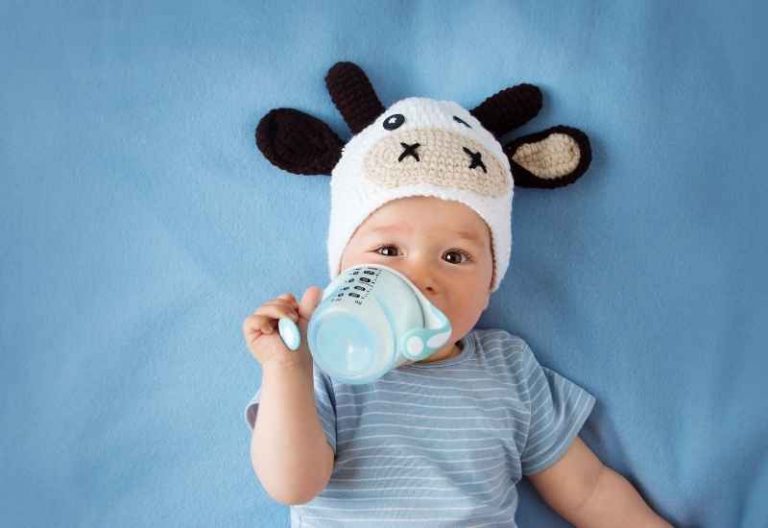5 different baby cries – what’s your baby trying to tell you?
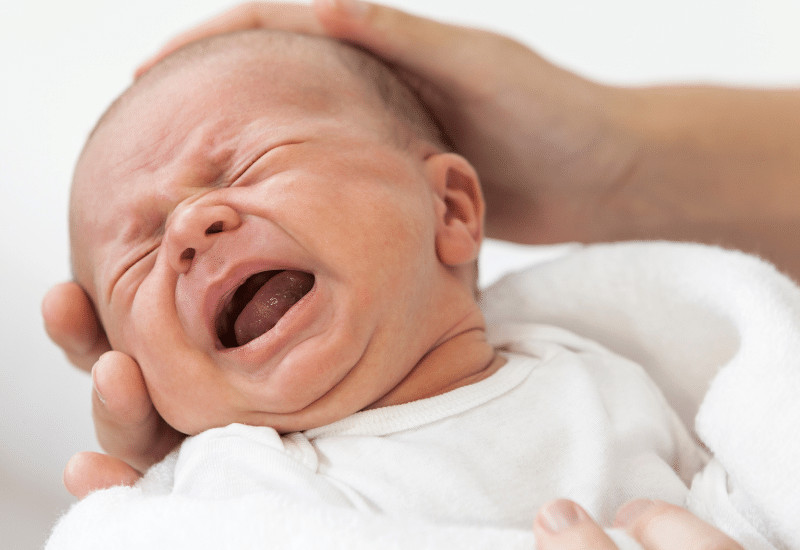
Mooom. He’s hungry. He wants neh,” Theo called from the living room while looking for the pacifier.
Toby was only a week old, but Theo knew very well why his baby brother was crying.
Since I became a mom, we’ve been using a method that explains the different baby cries. It’s called the Dunstan Baby Language.
When I first discovered it as a new mom, it was a tremendous help and I suddenly felt I could understand what my baby was trying to tell me.
In this post, I’ll share what it is and my experience with it, so that you too can learn to understand the different cries of your baby and meet any need they have.
Let’s get started.
Read next: Help – baby cries when changing diaper
Table of Contents
Dunstan Baby Language
The Dunstan Baby Language theory was created by Pricilla Dunstan, an Australian mother who discovered that newborns and babies make certain sounds just before they cry, and those sounds can help us determine what they’re trying to communicate.
She tested her theory on a thousand babies and found that regardless of race or whether they were 1 or 3 months old, the five sounds were the same.
Her method, the Dunstan Baby Language, has since been used by many parents and professionals with great success. Dunstan has appeared on shows like Oprah and she has a huge fan base of grateful parents, myself included.
You can hear examples of the 5 different baby cries here.
The 5 different baby cries
According to Pricilla Dunstan, you can find out what your child is trying to communicate by listening to these five universal sounds.
Tip: In my experience, the sooner you can decode the different baby cries and help, the better. If your little one becomes genuinely upset, it’s really difficult to hear and determine what they need. Just keep that in mind.
The 5 universal sounds are:
- Neh – I’m hungry
- Eh – I need to burp
- Eair – I have gas
- Heh – I feel discomfort (hot, cold, wet)
- Owh – I’m sleepy
1. Neh – I’m hungry
The neh sound is a very basic sound that means: “I’m hungry”. When your baby emits this sound, they often show a sucking reflex, and the tongue is pushed up into the palate, which brings out the “neh” sound.
My experience: Babies (at 2.5 months and older) sometimes also tr
y to gnaw or suck at their hand or reach towards your breast or mouth. When I pick my baby up just before I feed him, he always tries to kiss me (I love that), like he’s thinking mom is one giant bowl of milk.

2. Eh – I need to burp
When your baby says “ehhhh”, it means “Mommy, I need you to pick me up and help me burp.” The Eh sound can be a bit difficult to distinguish from Neh and Heh. But if you try picking your baby up, you’ll quickly discover if it was a burp or not.
My notes: When my boys needed to burp, they also started kicking and flailing their arms like they were struggling with something. As soon as I picked them up, they burped and instantly relaxed.
3. Eair – I have gas
The Eair sound means “I’m gassy, Mommy”. It’s a deeper sound that can be difficult to distinguish, but it’s often seen together with your baby pulling their legs up under them or pushing them down. Their body and facial expressions clearly show discomfort.
4. Heh – I feel discomfort (wet, hot, cold)
When your baby says heh, they feel discomfort. Like, they need a new diaper, need to change position, need to be held or be picked up. Heh sounds almost like Neh, although in my experience, the “heh” sound is shorter than the “neeeeeh”.
My notes: When my youngest is cold, he also gets hiccups.
5. Owh – I’m sleepy
“Owh” means “I’m tired”. This sound comes as a reflex when your baby yawns loudly.
My notes: When your baby is 3 months and older, they will also rub their eyes, yawn or just look very sleepy when they need to nap.
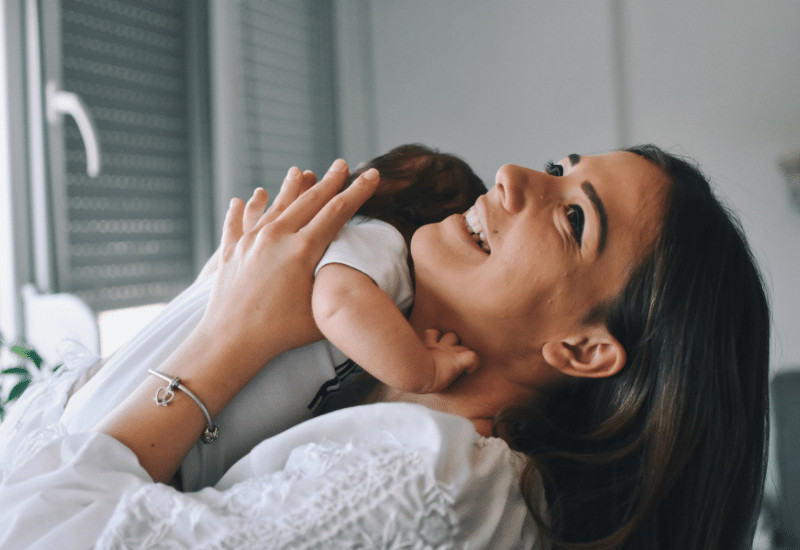
… but sometimes we just don’t know
If you’re new to this or can’t interpret the different baby cries, don’t worry.
Not all babies are the same, and you’re not supposed to know the difference in your baby’s crying.
The fact is, all babies cry, and sometimes you just don’t know why. You can use the exclusion method or try to think logically and figure out a solution. If your infant has eaten 15 minutes ago and suddenly starts crying, you can assume that they’re probably not hungry, but may need to burp or a clean diaper.
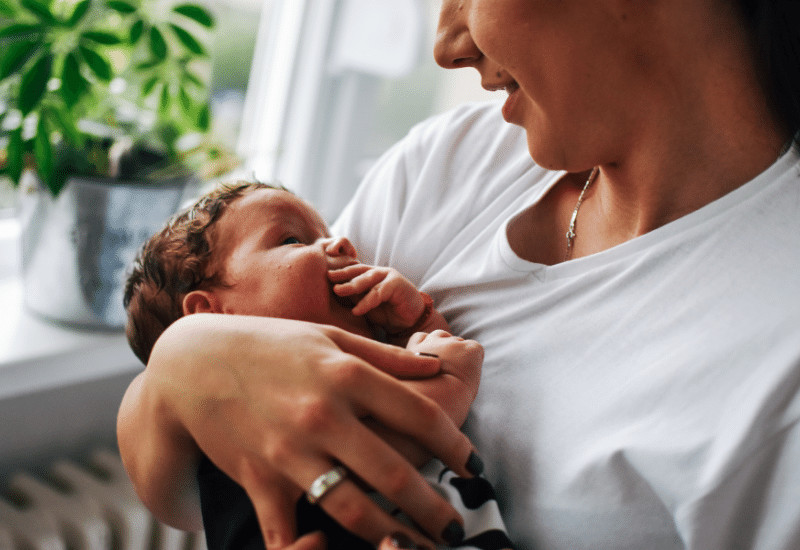
Babies cry for many reasons
- Your child might be hungry or thirsty
- Your child needs to be picked up
- Your child cries because it feels uncomfortable
- Your baby cries because it is overtired
- Your child needs help to relax
- Your baby needs a clean diaper
- Your child needs contact
- Your baby cries because they’re in pain
Crying is how babies express their needs
Crying is your little one’s way of telling you they need you. That they need your help. You should respond to the crying, but your reaction will be different depending on what your child needs.
An example:
A few months ago, the boys were in the living room while I was getting something from the kitchen, and then I heard Toby suddenly crying loudly like he was in pain. I instantly, and instinctively, knew that he had been hurt, dropped everything, and ran to the room.
Theo had wanted to show him some toys, and had by accident, dropped it on Toby. My point is – I wouldn’t have run to the room if his crying was different. Although we can’t decode EVERY cry, we have a sense of what’s wrong and will respond accordingly.
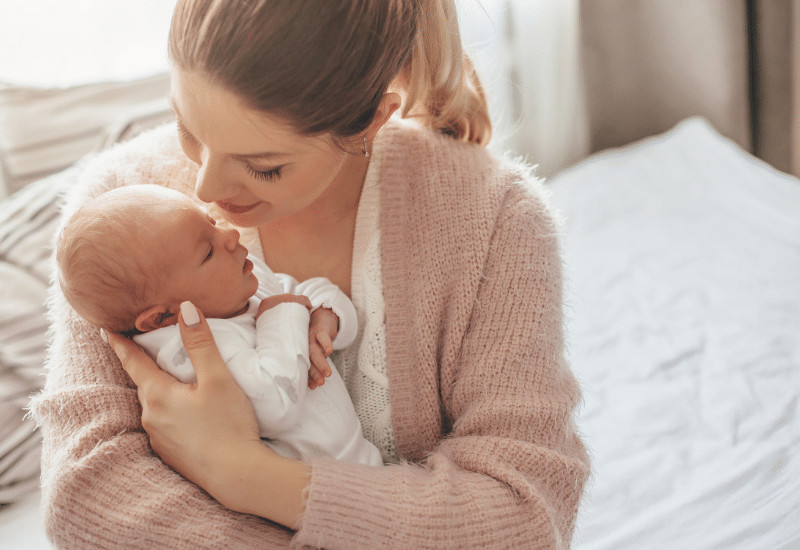
FAQ – Different baby cries and what they mean
What are the 3 types of baby cries?
The three types of baby cries are hunger cries, which are rhythmic and repetitive; pain cries, which are loud and long; and discomfort cries, which are whiny and may include fussiness.
What are the 5 universal baby cries?
The 5 universal baby cries are:
- Neh: Signifies hunger.
- Owh: Indicates tiredness.
- Heh: Suggests discomfort.
- Eairh: Indicates lower gas pain.
- Eh: Means burping is needed.
How can I tell what my baby’s cry is?
To understand your baby’s cry, listen for patterns.
A rhythmic, repetitive cry often means hunger, a sudden, loud cry might indicate pain, and a fussy, whiny cry could suggest discomfort.
Over time, you’ll learn to recognize your baby’s specific needs based on their cries.
What are the 4 patterns of crying?
The four patterns of crying are:
- Basic Cry: A rhythmic pattern, usually indicating hunger.
- Angry Cry: More intense and louder, showing frustration or annoyance.
- Pain Cry: A sudden, long, and loud cry signaling distress or discomfort.
- Fussy Cry: Whiny and intermittent, often due to tiredness or boredom.
More posts
- Help – baby cries when changing diaper
- Why independent play is important for cognitive skills and health
Save it!
